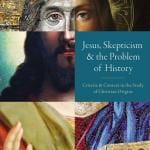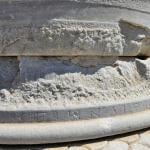Paula Gooder
Phoebe: A Story.
Downers Grove, IL: InterVarsity Press, 2018.
Available at IVP or Hodder & Stoughton
By Kate Tyler
Biblical students will be familiar with the importance of context (and if they’re not, they obviously need to do further study!) Good exegesis requires being aware of various technical details such as authorship, dating and structure, and then of the internal details of a passage. Who are the characters mentioned? What is the historic setting in which they live? What particular challenges did they face?
In order to invite students into such details, Phoebe: A Story sets out to ‘re-create’ the world of the church of Rome through historical narrative. While Gooder suggests that this work is not really a novel since it is written to inform as well as entertain, it does fit into the category of Christian fiction, albeit as a well-researched and contextually sound “act of historical imagination” (p. 224). The narrative begins with Phoebe arriving as the bearer of Paul’s letter to the Romans, with the additional goal of making preparations for Paul’s future travels onto Spain once he had arrived in Rome. Aquilla and Priscilla, named as Paul’s co-workers in Romans 16, play a key role in the Roman Christian community, while other characters are developed as demanded by the story. The narrative extends from Phoebe’s arrival in Rome with Paul’s epistle, through to Paul’s eventual arrival in Rome as a prisoner awaiting an audience with Caesar. Phoebe is front and centre in a story of redemption, healing and the renewed hope that comes from the resurrection.
Presenting a story like this in engaging and readable detail required moving beyond the slim details provided by Scripture about the key characters in order to construct enough detail with which to furnish the narrative. Gooder’s authorial decisions are well supported by a significant amount of scholarly comment provided in a separate section at the end of the book, arranged by chapter and topic, and referencing further academic materials. A brief glance at Gooder’s more academic publications demonstrates her strong credentials for having undertaken such a task.
The strength of this engaging read is the way in which it invites the reader into the context of the biblical world. I’d be happy to assign sections of this work to students as a way to help them get beyond the textbooks and into the world of the text.
Dr Kate Tyler is College Director of Bishopsdale College in New Zealand.












